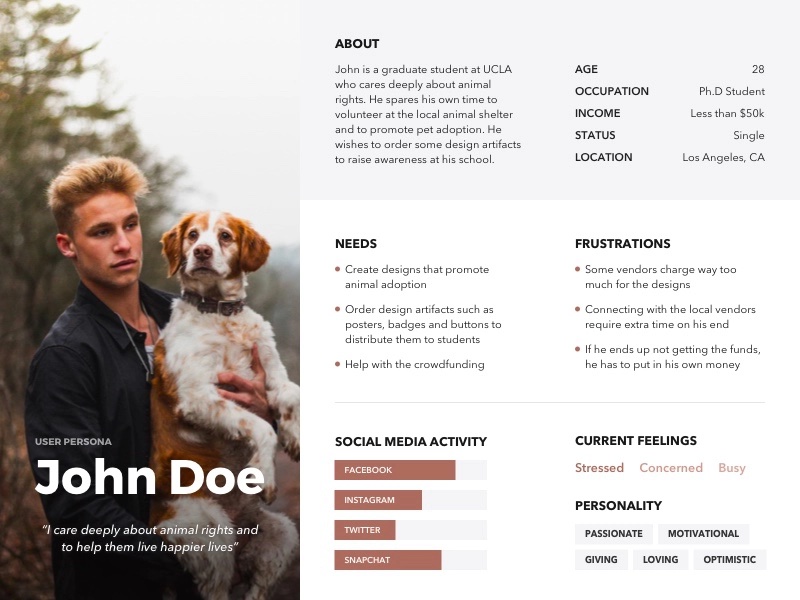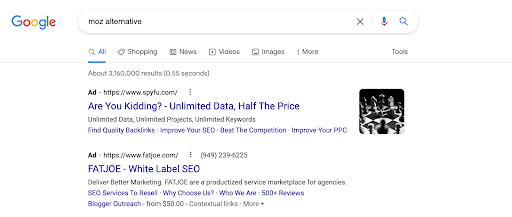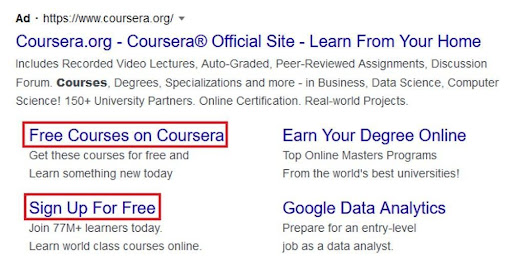
Pay-per-click (PPC) is a paid marketing campaign popular for producing quick results. It can boost brand visibility, increase website traffic, and drive more sales within moments of your ads going live.
In contrast, techniques like SEO can take months before they produce any results. It’s, therefore, clear that any business can benefit hugely from PPC. But, how exactly do you build a successful PPC campaign?
This guide will walk you through nine steps you can follow to set up a successful campaign for search engine ads.
1. Develop a buyer’s identity
A buyer’s identity, also known as the customer persona, gives you an accurate profile of your ideal customers. It shows you the customer’s demographics, interests, pain points, etc.

Understanding your target audience makes it easier to create a highly effective PPC advertising strategy. Therefore, do the research and collect the data you need to build the personas. You can do this by analyzing existing customer databases or conducting surveys.
2. Create a keyword list
The customer persona is one source of potential target keywords. Let’s say you’re a SaaS company providing sales automation services, for example. After exhaustive research, you may realize most of your potential clients want budget-friendly software. In such a case, one potential keyword worth targeting would be “affordable sales automation tool.”
You can also do keyword research using tools like Google Keyword Planner and Keyword Everywhere. These tools will show you all possible keyword, their search volume, and cost per click. They can even suggest alternative high-performing keywords if your target term is too expensive.
The other ingenious method of creating a keyword list is by spying on your competitors. Check what keywords they are ranking or bidding for using tools like SEMrush.
3. Include negative terms in your list
Negative keywords tell publishers when not to show your PPC ads. Including negative keywords improves the quality of your campaign by excluding your ads from irrelevant searches.
For example, an agency providing digital marketing services may include “jobs” as a negative keyword. That way, ads will not show up to people searching for “digital marketing jobs” since they are not relevant to your campaign’s goals.
To find negative terms, check the suggested terms when doing keyword research. Identify and exclude any terms that will attract the wrong audience.
You can also find negative terms by analyzing your Google search term report. Check the search terms triggering your ads and look for anything unrelated to the products you’re promoting.
4. Make a keyword list based on your financial constraints
When doing your keyword research, keep an eye on the cost per click for every term. Generally speaking, terms with the highest search volume are the most expensive. If these terms are out of your daily budget, consider alternative keywords with decent search volume.
You may need to change your keyword research strategy based on your budget. You should also set a maximum CPC for each keyword to avoid overspending.
5. Standout with your ad copy
An excellent PPC ad has an engaging headline, a concise display URL, a keyword-rich description with an irresistible value proposition, and a prominent call-to-action button.
To create such an ad, go back to your buyer’s identity and think about the possible keywords and value proposition that could work for your audience.

The ad from Wix ticks all boxes. It also provides two site link options to help users get to the main website building options easily.
You can have fun with your ad copy too. This example from Spyfu is a nice case in point.

The ad copy stands out from the other ad listings. They’ve also included an image, which brings additional attention to the ad.
6. Develop a compelling call to action
A good PPC ad copy ends with a crystal clear call to action, telling the prospects what they should do next. The CTA has to be short but compelling enough to trigger an action.
You can use the CTA to echo your value proposition. For example, if you are promoting a free trial for your product, a good CTA could be something like “Start Free,” “Start Free Trial,” “Sign Up Free,” and so on.
Coursera uses such CTAs in their ads:

The good news here is you can test different CTAs until you find one driving the highest click-through rate.
7. Use ad extensions to your advantage
Ad extensions make your ads more effective. They allow you to include additional information for increased engagements.
Some common Google ad extensions include:
- Location extensions – Use this extension if you want to drive foot traffic to your physical store.
- Call extensions – The extension lets you add a business phone number.
- Structured snippet extensions – They display additional features of your product.
- Sitelink extensions – They add extra links to different pages on your website.
- Price extensions – They display the price of your product on the ad.
Ad extensions make it easier for potential customers to find the information they need. Extensions like structured snippets also help you communicate the value proposition better.
8. Develop a conversion-oriented landing page
A good ad drives clicks, but it’s the landing page that will get you the conversions you need. It’s, therefore, imperative to design a conversion-oriented landing page to get optimal ROI.
A great landing page contains a compelling copy, relevant and interesting visuals, social proof, and a powerful CTA.
Remember that your landing page should also be relevant to the ad copy. The product and value proposition showed on the ad should reflect on the landing page as well.
A/B test different versions of your landing page to find one your audience loves.
9. Keep track of what is going on, make changes, and improve it
After launching your ads, monitor metrics such as impressions, click-through rate, ad spend, conversion rate, cost per conversion, and return on ad spend.
To ensure you are getting the maximum return on investment, test out different aspects of your ads, landing page, value proposition, etc. until you are satisfied with the results of your ads.
Conclusion
PPC is a great marketing strategy that can boost brand visibility, traffic, and conversions within days. However, that will only happen if you implement a great strategy.
In this article, I shared several tips on how to build and launch an effective PPC campaign. Build a buyer’s identity, create an exhaustive keyword list including negative keywords, write a solid ad copy, develop a compelling CTA, and use ad extensions where necessary.
You also need a conversion-oriented landing page, and once your ads go live, monitor the key metrics and adjust your campaign accordingly.
Get our newsletter and digital focus reports

Stay current on learning and development trends, best practices, research, new products and technologies, case studies and much more.



